Starting a music blog is an excellent way to use your passion for music to create a passive income stream.
Take it from us – we’ve seen significant earnings from our own blogging ventures. Here’s a glimpse of what you could achieve:

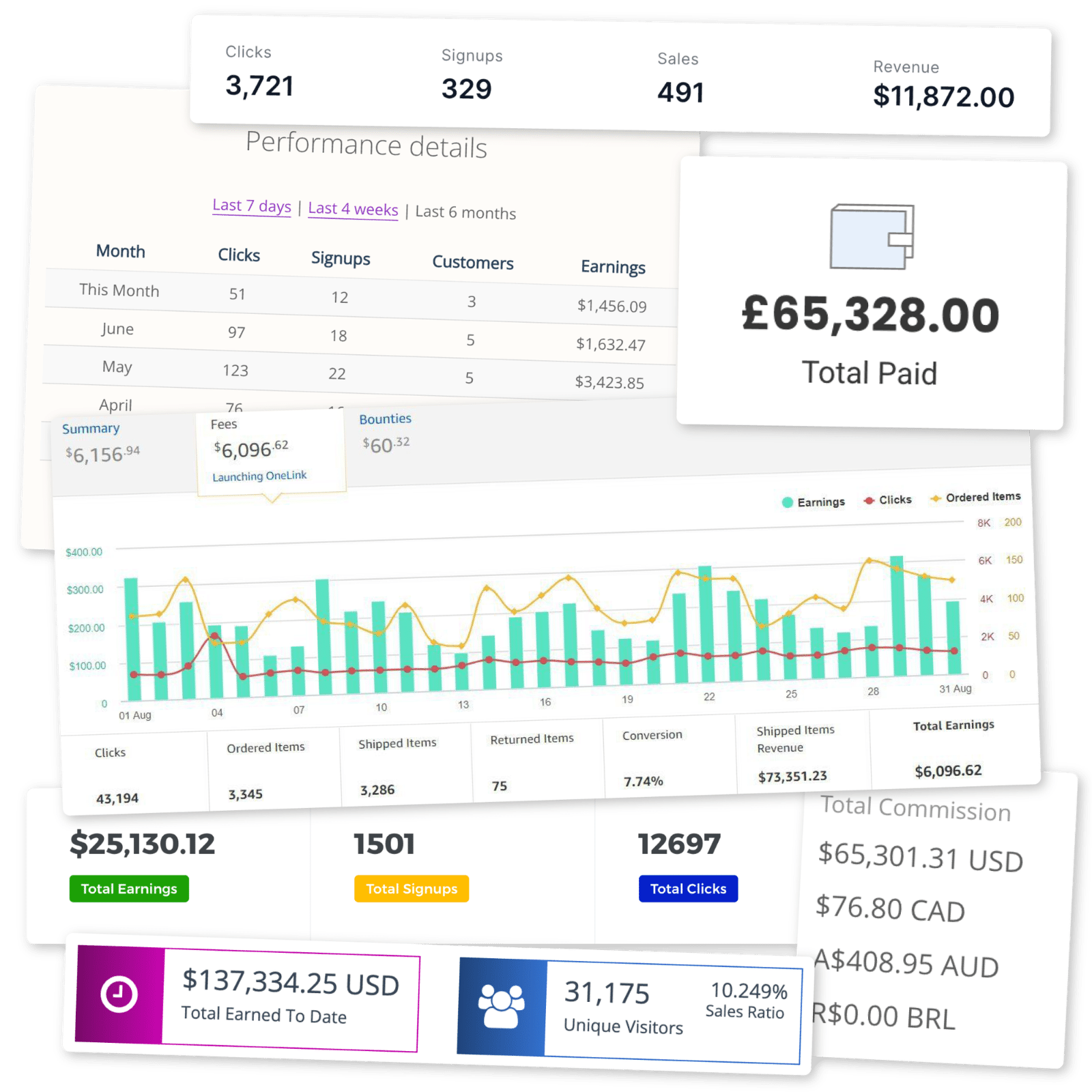
We’ve also guided over 14,000 students on how to launch successful and profitable blogs in many niches – including music.
If you’re ready to dive into the world of music blogging, read our step-by-step guide below.
Why Start a Music Blog
Are you passionate about music? Starting a music blog might be a great idea whether you’re a budding musician, an artist, or just love music.
For starters, music bloggers can make a good income. Our affiliate marketing statistics show that affiliate marketers in the entertainment niche make around $4,416 every month. You can also make money by promoting your own work, selling music-related merchandise, or offering music lessons.
A music blog also connects you with a community of music fans, artists, and producers. It’s a fantastic way to network and share your passion with others.
Another benefit is that your blog can double as your online portfolio. It showcases your talents and can attract potential clients and customers.
Examples Of Successful Music Blogs
Let’s take a look at three successful music blogs:
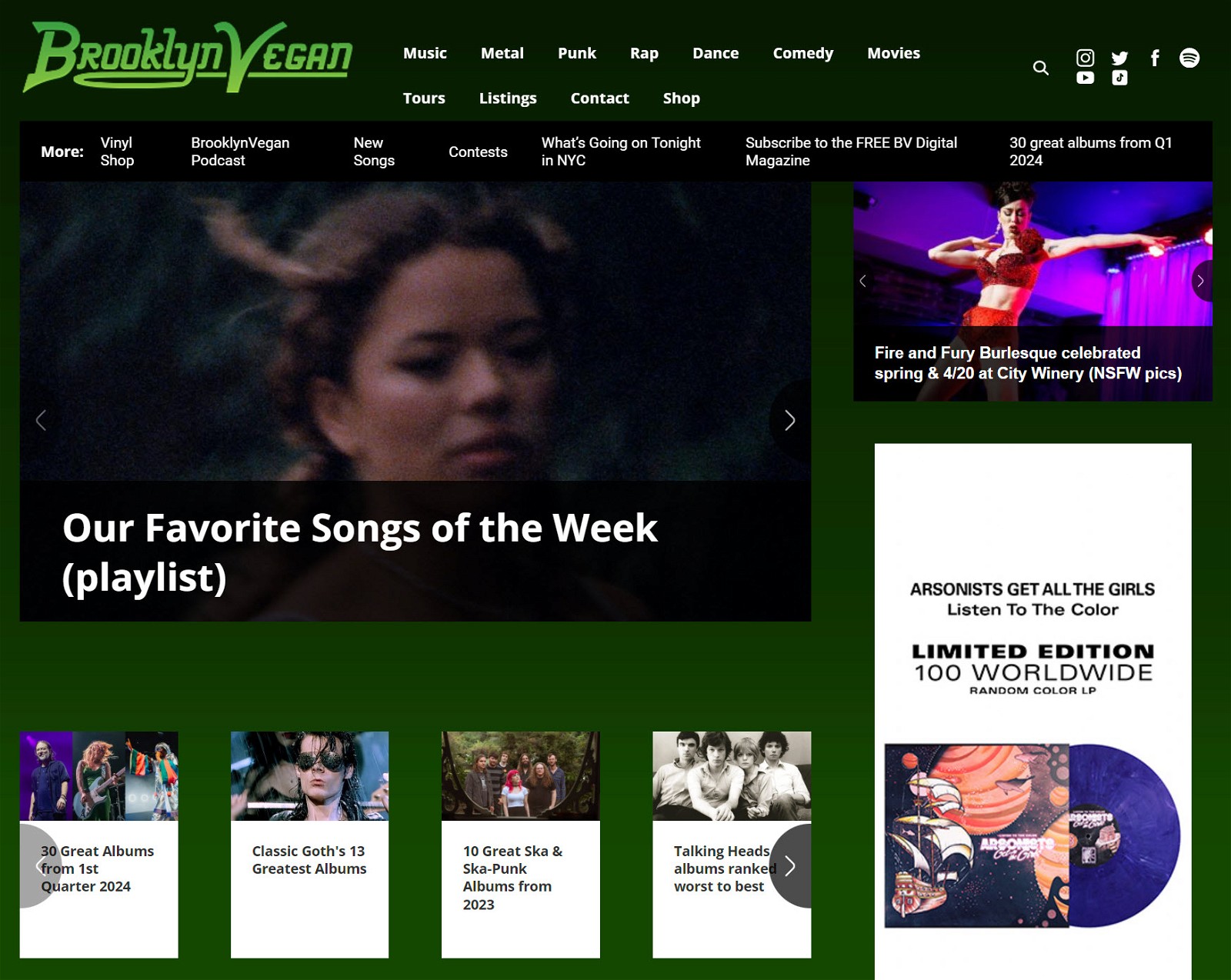
BrooklynVegan
BrooklynVegan is a New York City-focused music blog that writes about new songs, live show reviews, tour dates, gossip, music industry news, and more.

Music Business Worldwide
Music Business Worldwide is your go-to blog if you’re in the music industry. Launched in 2015 by Tim Ingham, this site gives you a detailed peek into the current state of the music business.

MixMag
Mixmag is a popular music blog from the UK, focusing on a wide range of music topics. It started back in 1983 as a simple black-and-white newsletter aimed at DJs. With the rise of house music, Mixmag expanded its coverage to include the vibrant dance and club scene.
How To Start a Music Blog in 10 Easy Steps
Let’s go through the ten necessary steps to starting a music blog.
1 Narrow Down Your Niche
Choosing the right niche is key to the success of your music blog. It helps you focus your content on a specific audience, making attracting and keeping a devoted following easier.
Imagine you’re searching for tips on how to play guitar. Would you prefer insights from:
A) Someone who has mastered the guitar and writes in-depth about it on their blog.
B) A general music blog that briefly covers a range of topics.
You’d probably choose option A, right?
Specializing makes you trustworthy because your readers know you get their specific interests.
So, start by deciding on the music sub-niche you want to explore. Think about what you’re passionate about and know a lot about in the music world. Here are a few music niches to get you inspired:
- Guitar Techniques for Beginners: Easy chords, strumming patterns, and beginner songs.
- Music Production for Amateurs: Home recording tips, software reviews, and mixing techniques.
- Genres and History: In-depth exploration of jazz, classical, or hip-hop genres.
- Music Reviews and Critiques: Analyzing new albums, concerts, and artist performances.
- Instrument Maintenance and Care: How to care for different instruments, from pianos to violins.
Blogging about music is a commitment; choosing a niche you love will make it enjoyable and keep you driven. Plus, connecting with your audience is easier when you’re genuinely interested in the topic.
But if your goal is to earn money and grow your audience, the popularity of your niche matters a lot.
For better chances of success, pick a sub-niche with already thriving blogs. Here’s how to check if a niche is promising:
Start by listing existing music blogs in each niche you’re considering.
You can find these blogs through a blog aggregator like Detailed, by searching on Google, or by using the “Organic Competitors” tool on Ahrefs with a specific URL to see similar sites.
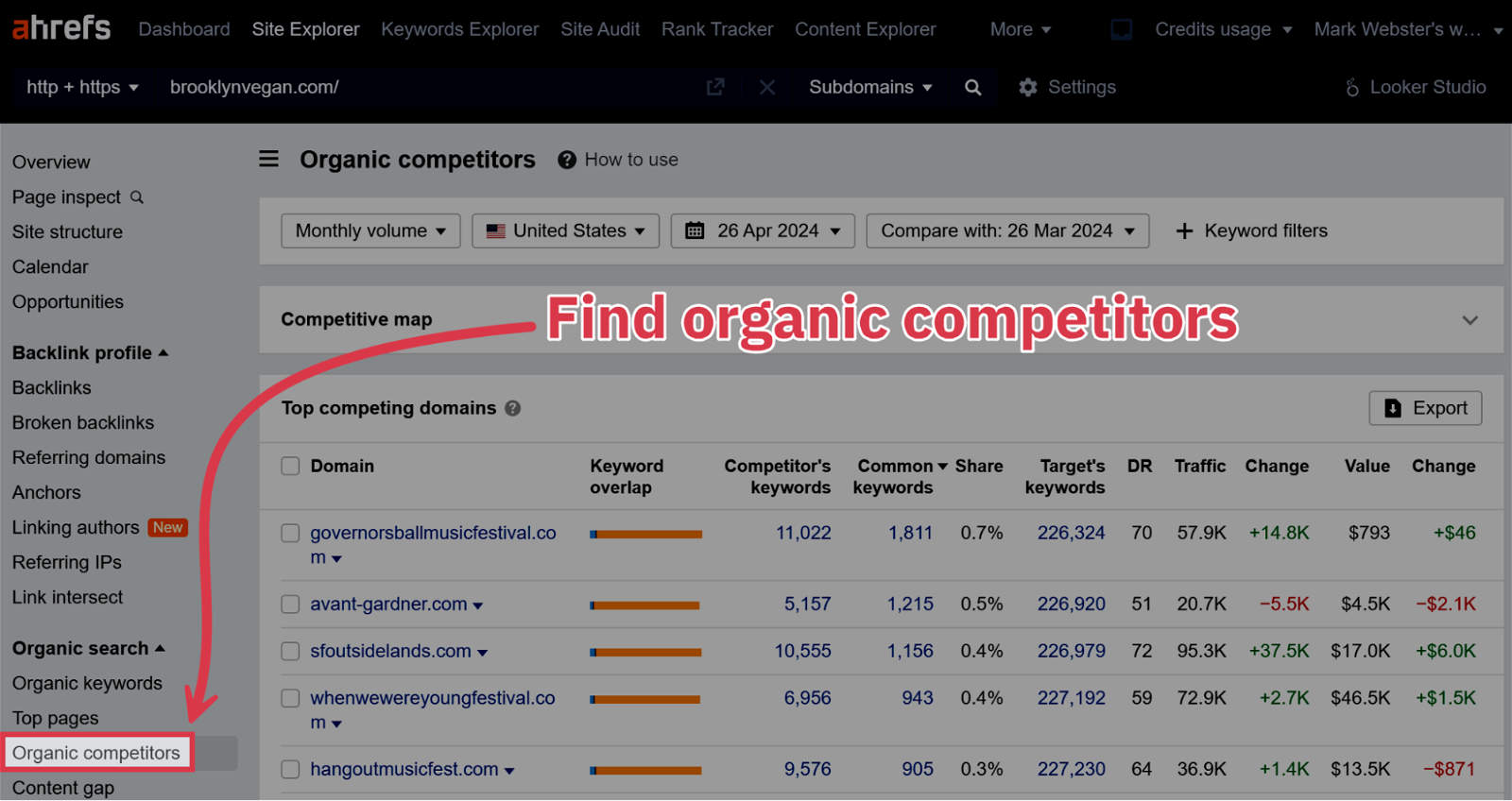
Then, look into how much traffic these blogs receive, which indicates their success. You can use tools like SE Ranking’s “Competitive Research” tool during a free trial to gather this info.

If you’re still unsure which niche to choose, compare them using Google Trends to see which gets more searches.

Need more guidance? Check out our tutorial on selecting the perfect niche for your music blog:
Remember, there’s no rush to decide. Taking a day or two to think it over is okay — just don’t let indecision prevent you from starting.
2 Choose a Blogging Platform
Once you’ve chosen a niche for your music blog, the next step is selecting a blogging platform. This is where you’ll manage, publish, and share your content online.
If you’re just starting out in music blogging, consider using a free social platform like Medium or Blogger.
These platforms are good for beginners but come with significant drawbacks.
- They can control how visible your posts are.
- They might limit your reach if your content doesn’t match their algorithms, and some might even delete your posts if they’re not performing well.
- It’s tough to make money from your work — you can’t use display ads, might face restrictions on affiliate links, and can’t sell products.
- You don’t get to control the design or functionality of your blog.
That’s why we suggest making your own website. When you build your own site, you control everything from the design to the content you post. And there are more perks:
- No one can take down your site or delete your content but you.
- You can earn money through affiliate links, display ads, and even an online store.
- You can attract more visitors using tactics like social media marketing and SEO.
- You can build an email list of potential leads and customers, diversify your traffic sources, and guard against algorithm changes.
While there are many good blogging platforms available, we recommend WordPress.org (not WordPress.com).

WordPress.org is a free, open-source platform (though you need to buy a domain name and pay for hosting).
WordPress is favored by bloggers because it’s user-friendly, has a superb content editor, and works well with many tools, including SEO apps. Plus, you can choose from hundreds of WordPress themes tailored to the music industry.
3 Choose Your Domain Name
It’s time to pick your music blog’s address: the domain name. This is the part of a URL between www. and extensions like “.com”.

Choosing the right domain name is key for several reasons. First, it establishes a memorable and unique identity for your music blog. It also sets expectations for what visitors will find on your site. Additionally, an effective domain name makes it easier for people to share your blog, boosting its visibility.
Here are some tips to help you select an excellent domain name:
- Use relevant keywords: Stick to straightforward terms your audience is searching for. For example, if your blog focuses on concerts, you might opt for “LAConcertListings.com”.
- Keep it short and simple: Long domain names are hard to remember. Choose something concise and catchy. Try to keep it under 14 characters, avoiding complex elements like hyphens.
- Know your music synonyms: With many music blogs out there, finding an available domain can be challenging. If “LAConcertListings” is taken, consider “LAGigListings” as an alternative.
- Leave room for growth: While having a specific focus is good, make sure your name doesn’t limit future expansion. A name like “WestLAConcertListings” may be too narrow.
- Use a .com domain: Although music-specific extensions like .band or .audio exist, 70% of people trust “.com” domains more. But if your ideal .com name isn’t available, you can explore popular .com alternatives.
Finding a catchy name for your music blog can be difficult, so consider using AI tools like Brandsnap.ai, which can generate names quickly based on your input.
Once you’ve chosen your name, you’ll need to purchase it. We recommend Namecheap, which offers .com domains at just $10 annually.
4 Buy Web Hosting
Now you have your domain name, it’s time to invest in a website hosting service. This gives you the infrastructure to manage and maintain your music blog via an online server. Without hosting, no one will be able to visit your website.
Bluehost is a popular choice thanks to its low-cost plans. However, we think SiteGround is the best solution for WordPress hosting. At a slightly higher price, you’ll get ultra-fast performance and more advanced features.
Here’s how to get started with SiteGround hosting:
Step 1: Go to SiteGround’s WordPress hosting page.
Step 2: Scroll to the price list and select the cheapest “StartUp” plan. This will give you everything you need for a single music blog. Note that the subscription price will increase after your first year.
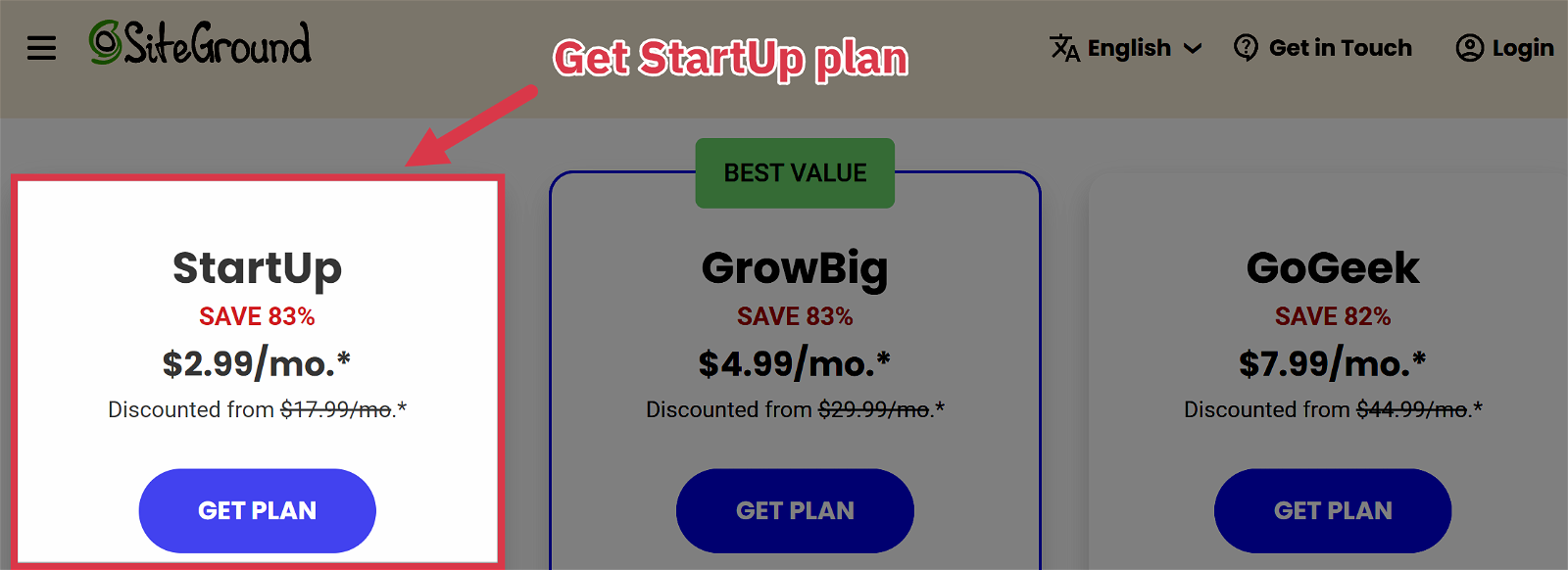
Step 3: Click “Get Plan” and choose the “Existing domain” option. Then, enter the domain name you purchased from Namecheap.

Step 4: Click “Continue” and complete the sign-up form provided. You’ll need to enter your email address, password, name, location, and payment information.

Step 5: Choose how long you want your package for. Usually, you’ll get the best deal by opting for a 12-month plan.

Step 6: Skip past the “extra services” option. You won’t need things like “Site Scanner” for a new music blog.
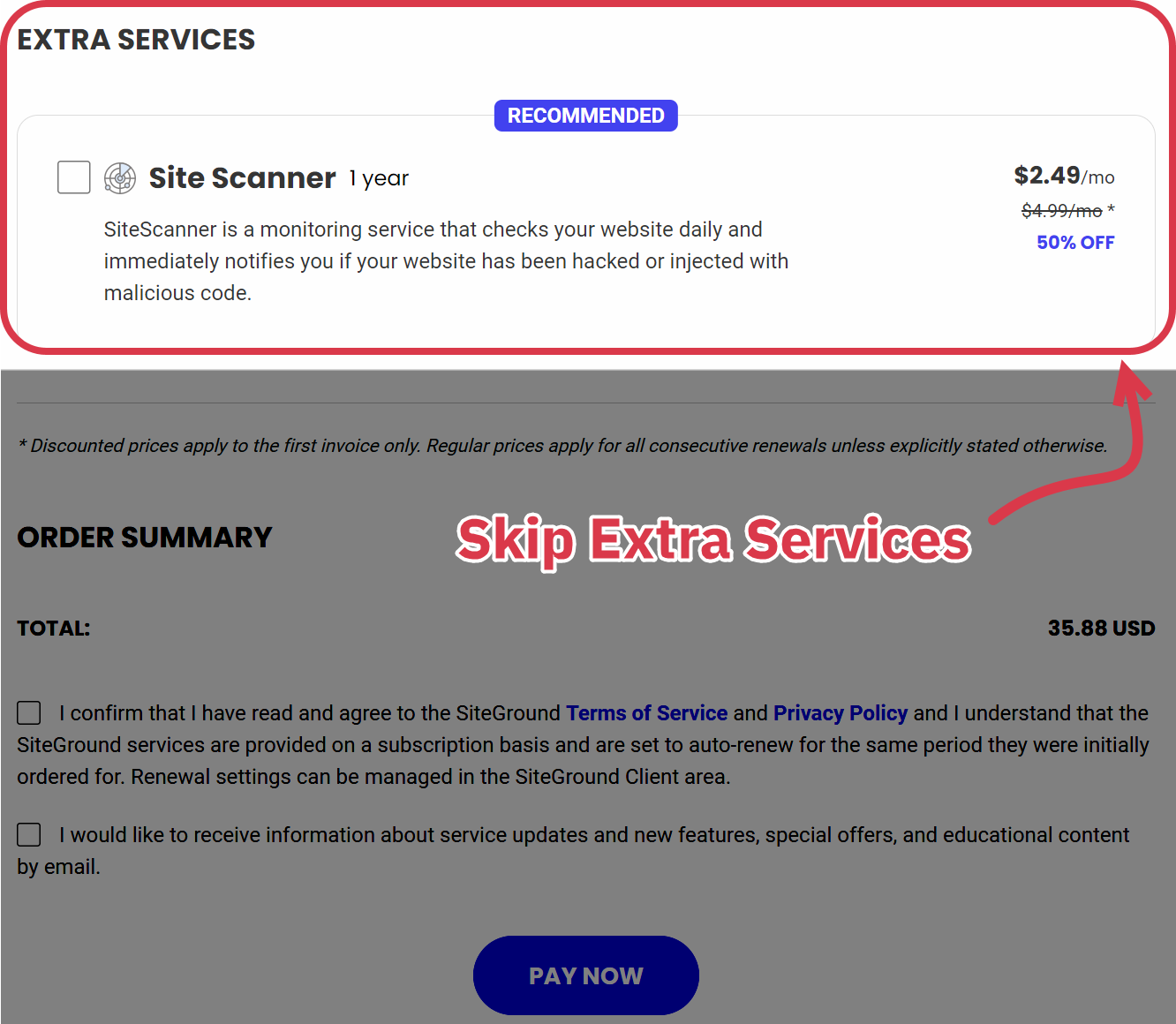
Step 7: Point your Namecheap domain to Siteground. You can find out how to do that here or contact the Siteground team for guidance.
That’s all there is to it. Now you can start building your WordPress website using your SiteGround hosting service and Namecheap domain name.
5 Choose a Theme for Your Music Blog
Now, let’s dive into one of the most essential aspects of starting your music blog: picking the right WordPress theme.
A WordPress theme sets the design and layout of your blog.
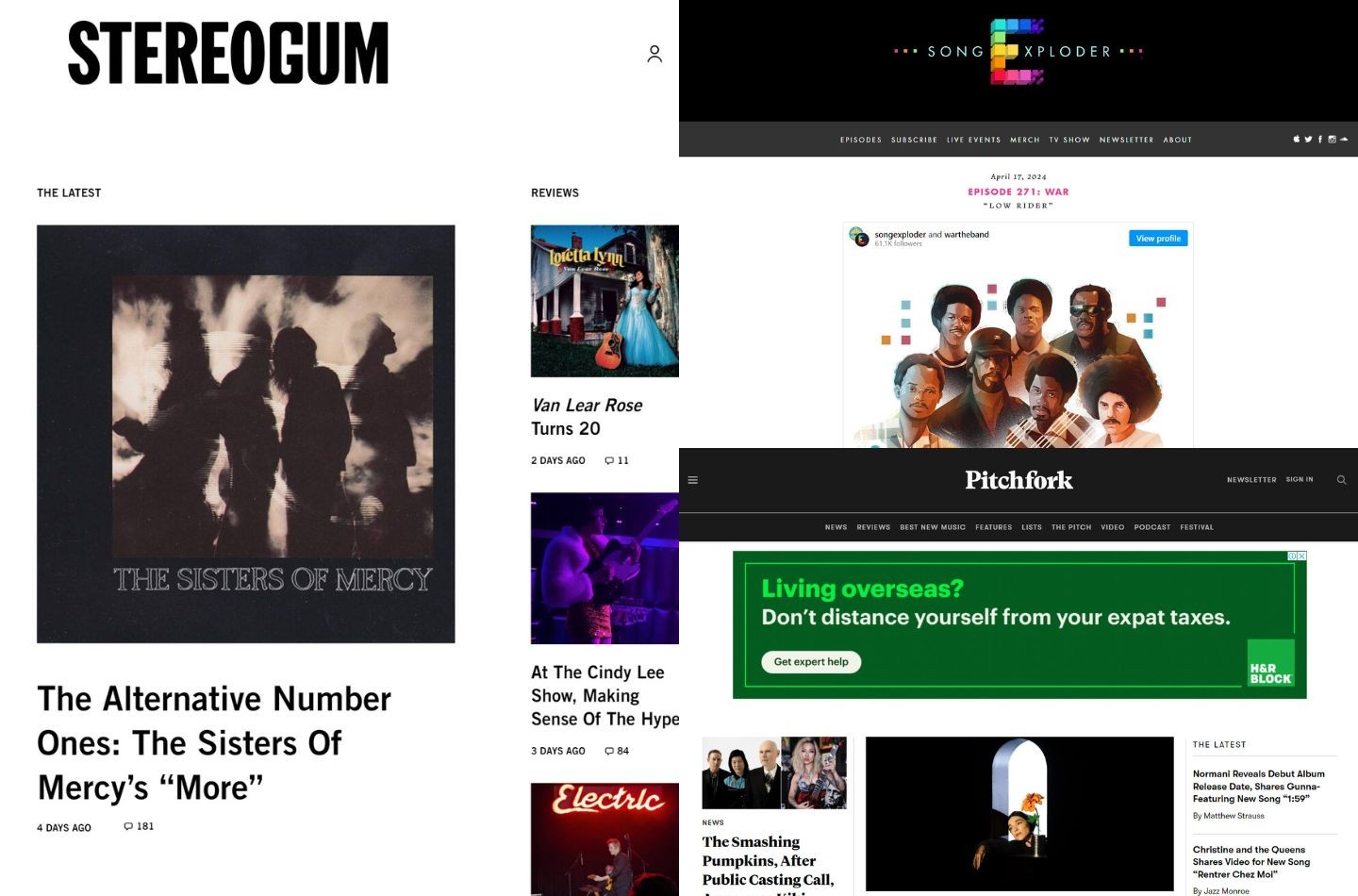
You’ll want to choose a theme that resonates with your music niche to attract the right audience. For instance, if you’re focusing on indie music, a more artistic and unique design might suit you, whereas a sleek and modern theme might be ideal for an electronic music blog.
We suggest opting for a “freemium” theme for a new blog.
This type of theme allows you to start with a basic version and then upgrade as your blog expands and you need more advanced features. This is crucial for enhancing your readers’ experience as your blog gains traction.
Our top three picks for “freemium” themes are Astra, Kadence, and GeneratePress. These themes are perfect for music bloggers due to their versatility and quality:

Known for pre-designed templates, it offers several perfect for the music niche.
Get AstraWhichever theme you choose, make sure it’s mobile-friendly, lightweight, and highly customizable to fit your unique style. Adding your chosen theme to your WordPress blog is straightforward:
Step 1: Log into your WordPress dashboard.
Step 2: Navigate to Appearances > Themes in the left sidebar.
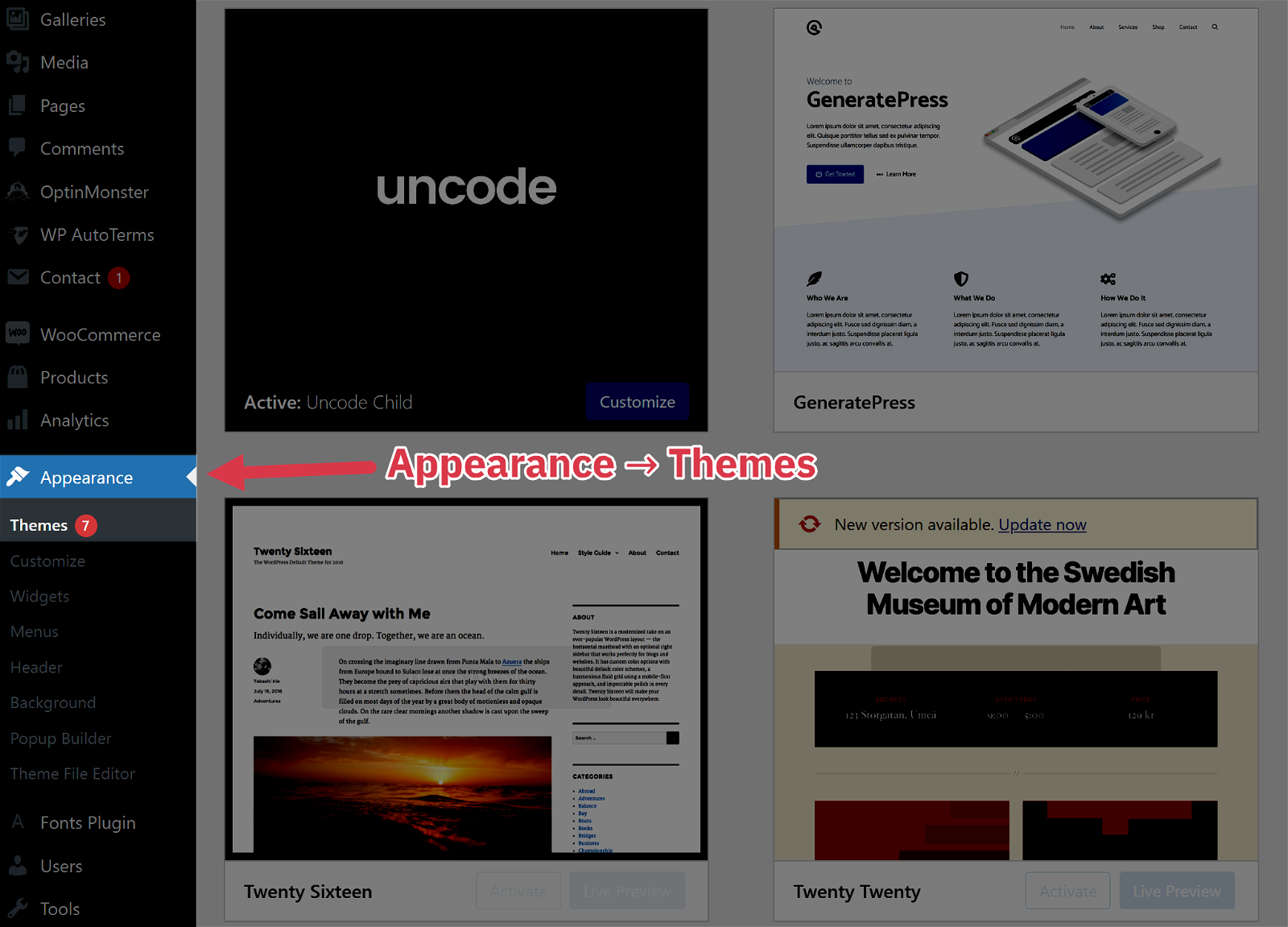
Step 3: Click on the “Add New” button.
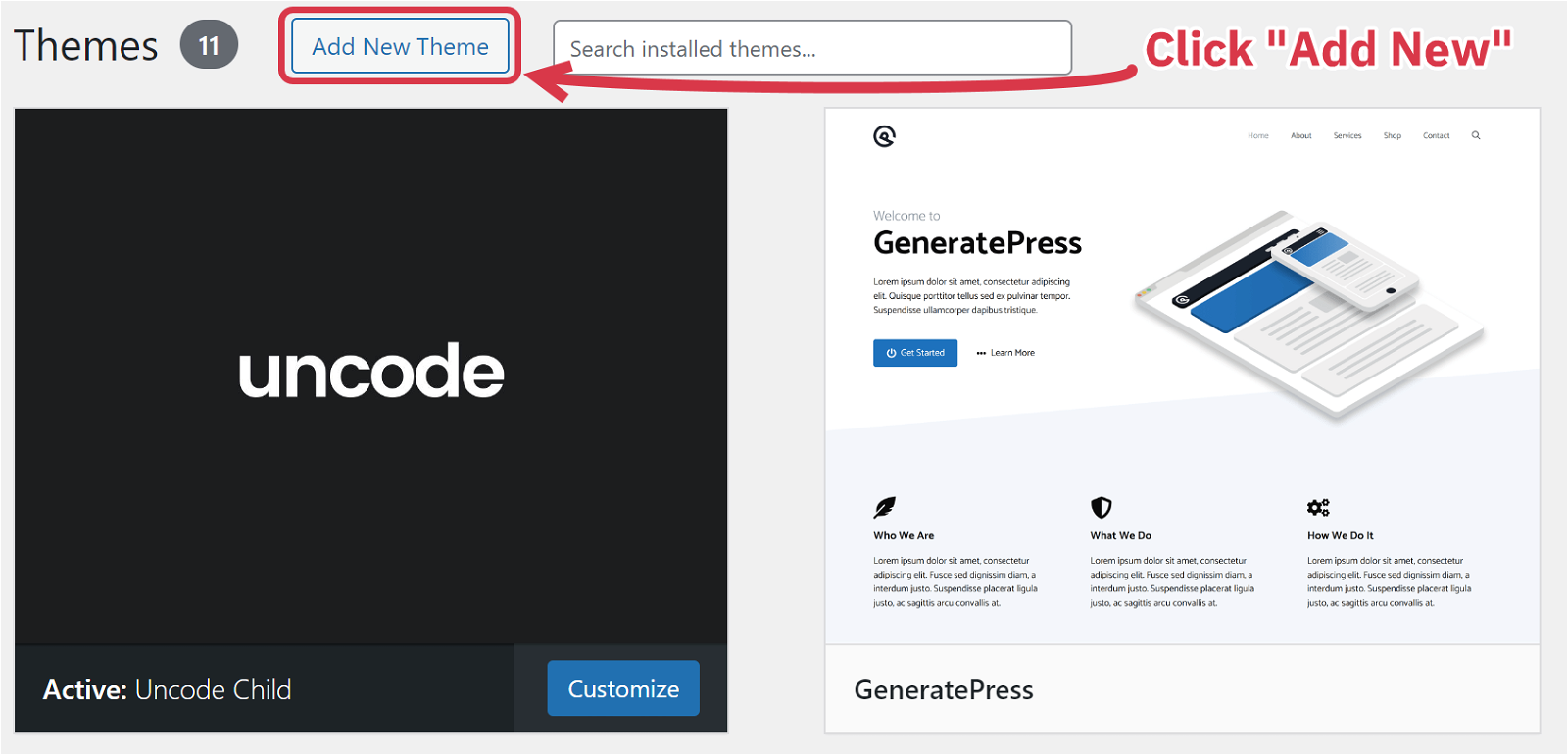
Step 4: Type in the name of your theme, then hit “Activate.”
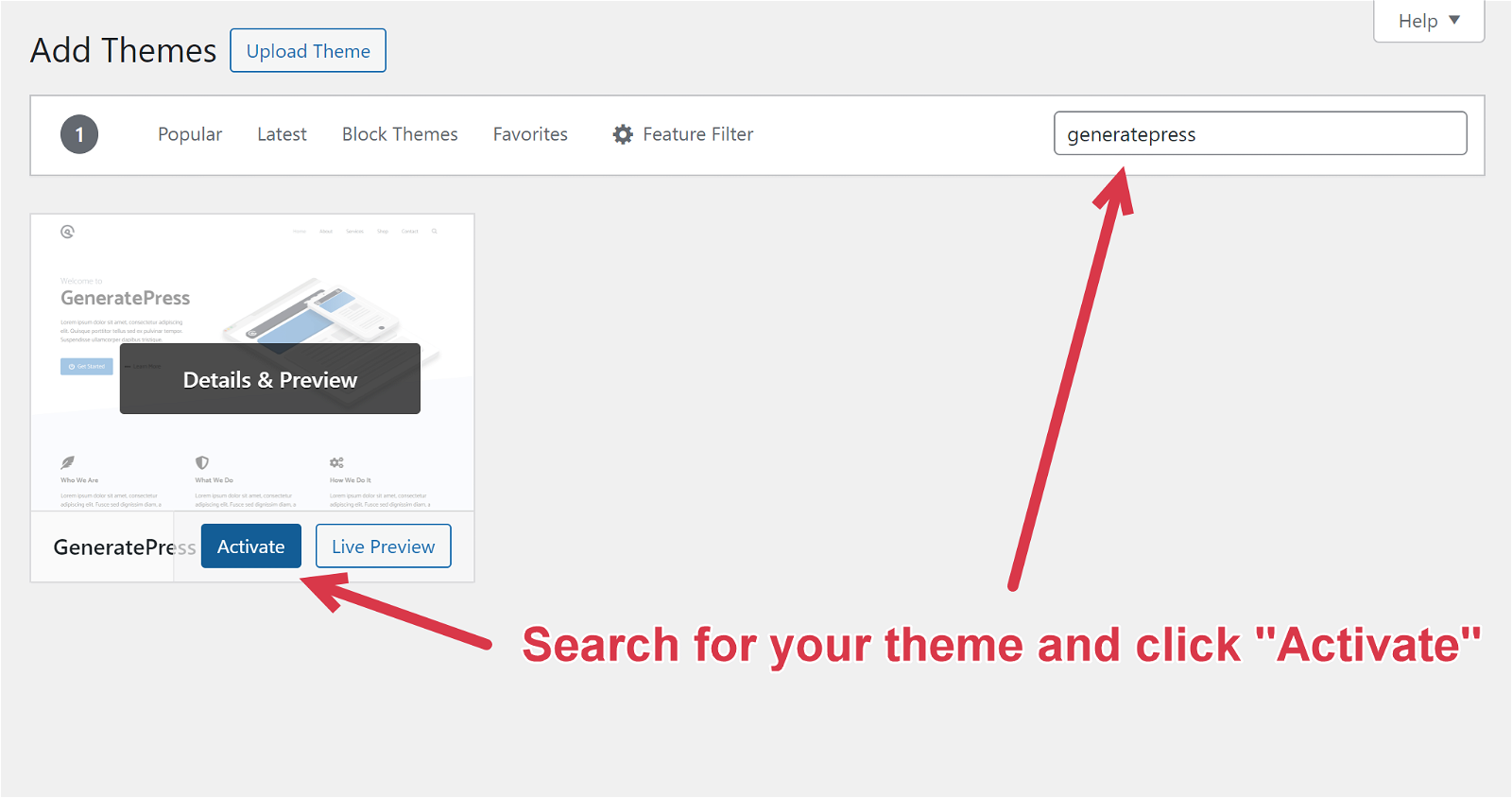
Step 5: After these steps, you can access the Theme section on your WordPress site to start tweaking your blog’s look — from colors and layouts to fonts and more.
6 Decide on Design & Branding
Once you’ve set up your WordPress theme, it’s time to give it a personal touch with your unique branding. Let’s focus on two essential elements: your color palette and logo.
Let’s start with the color scheme. The colors you choose will set the tone for your music blog. For instance, a blog about energetic pop music might feature bright and vibrant colors like hot pink, neon green, and sunny yellow.
For crafting a harmonious color palette, I recommend using Coolors. This user-friendly tool helps generate matching colors to make your music blog visually appealing.
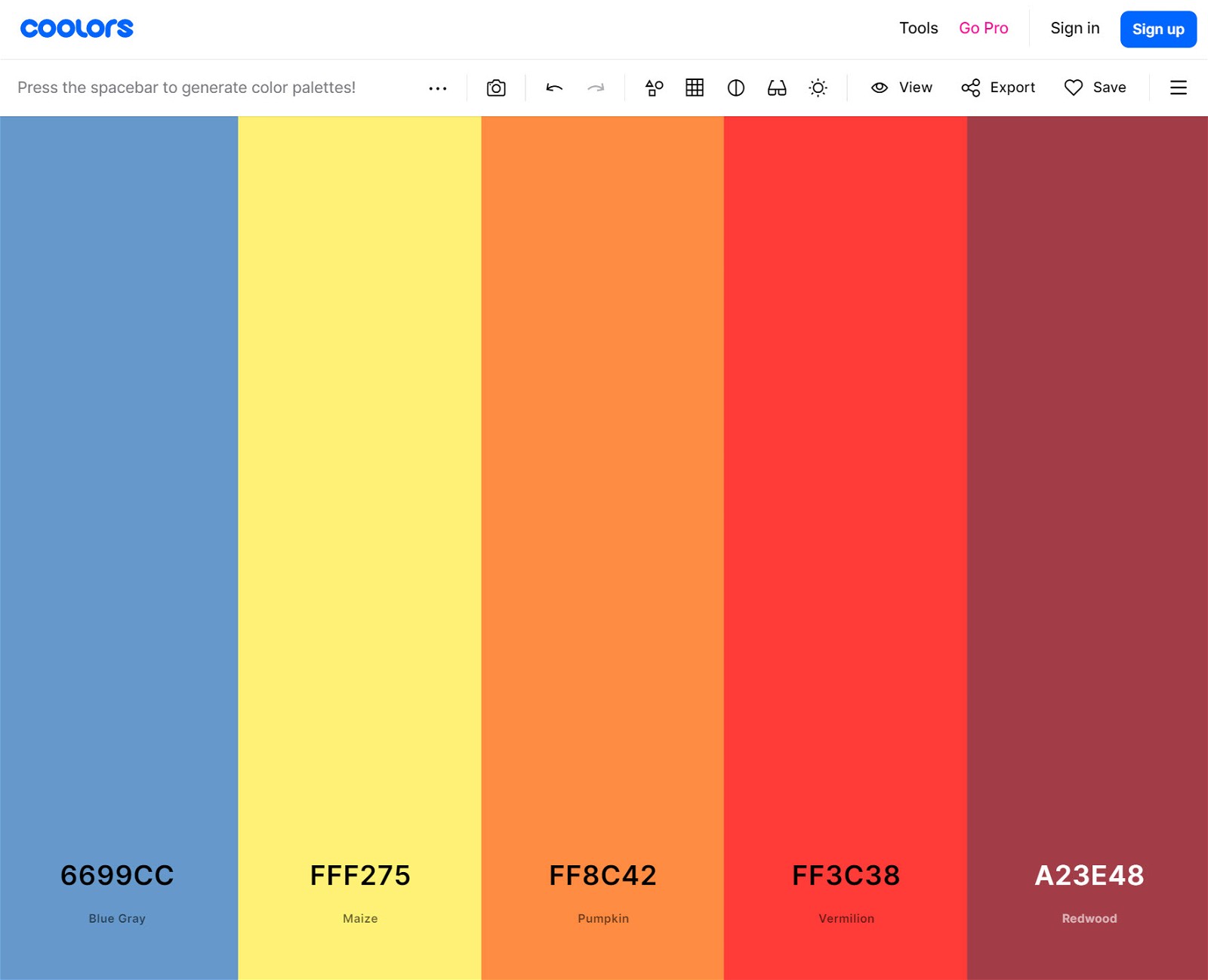
Moving on to the logo. Canva is my go-to resource here. It offers a variety of music-themed logo templates that you can customize to perfectly represent your blog.
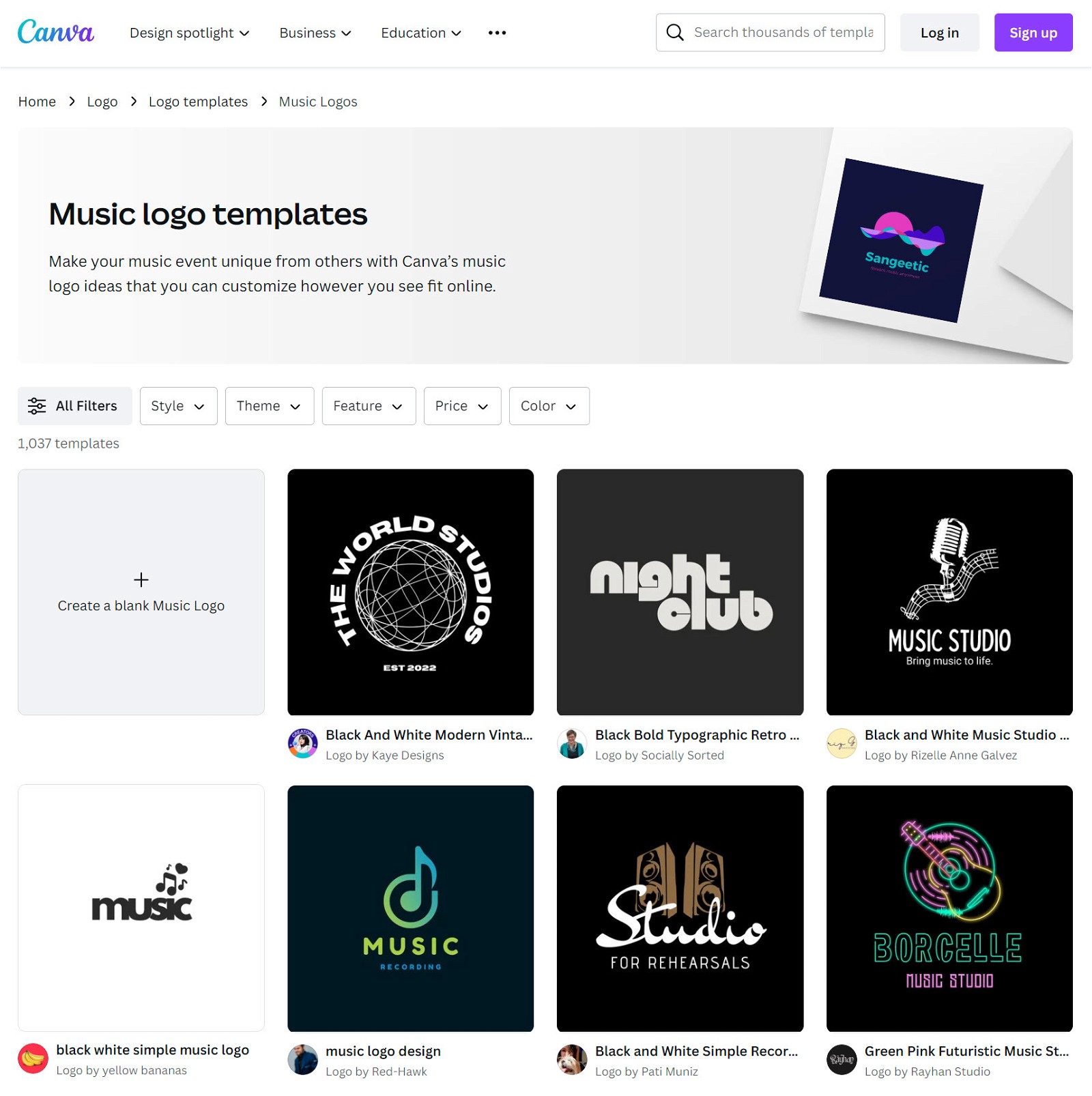
Simply search for “music logos” to start. Choose a template that catches your eye, and tweak it to include your blog’s name and color scheme.
7 Create Essential Pages
Once you’ve nailed down the basic design elements, it’s time to create key pages that every blog needs.
Homepage
Think of the homepage as the front door to your music blog. It should clearly express what your blog is about and help visitors easily navigate to their areas of interest.
A well-crafted homepage sets the tone for the entire blog and invites further exploration.
About Page
On your About page, share the story behind why you started your music blog and what you aim to accomplish with it. This page is a great opportunity to connect with your readers by building trust.
Incorporating personal anecdotes, your musical background, and a friendly photo can make this page more engaging and personable.
👉 For inspiration, check out some examples of successful About pages.
Contact Page
Your Contact page serves as a crucial link between you and your followers. It’s the place for reader questions, partnership offers, and general feedback.
Keep it straightforward with a contact form, email address, and links to your music-related social media profiles.
Privacy Policy + Terms & Conditions Pages
It’s important to have a Privacy Policy and Terms & Conditions to safeguard you and your site visitors. These pages clarify how you handle personal information and the rules for using your blog.
You can generate these pages easily at PrivacyPolicies.com.
Setting up new pages is a breeze. Log into your WordPress dashboard, find the “Pages” section, and click “Add New.”
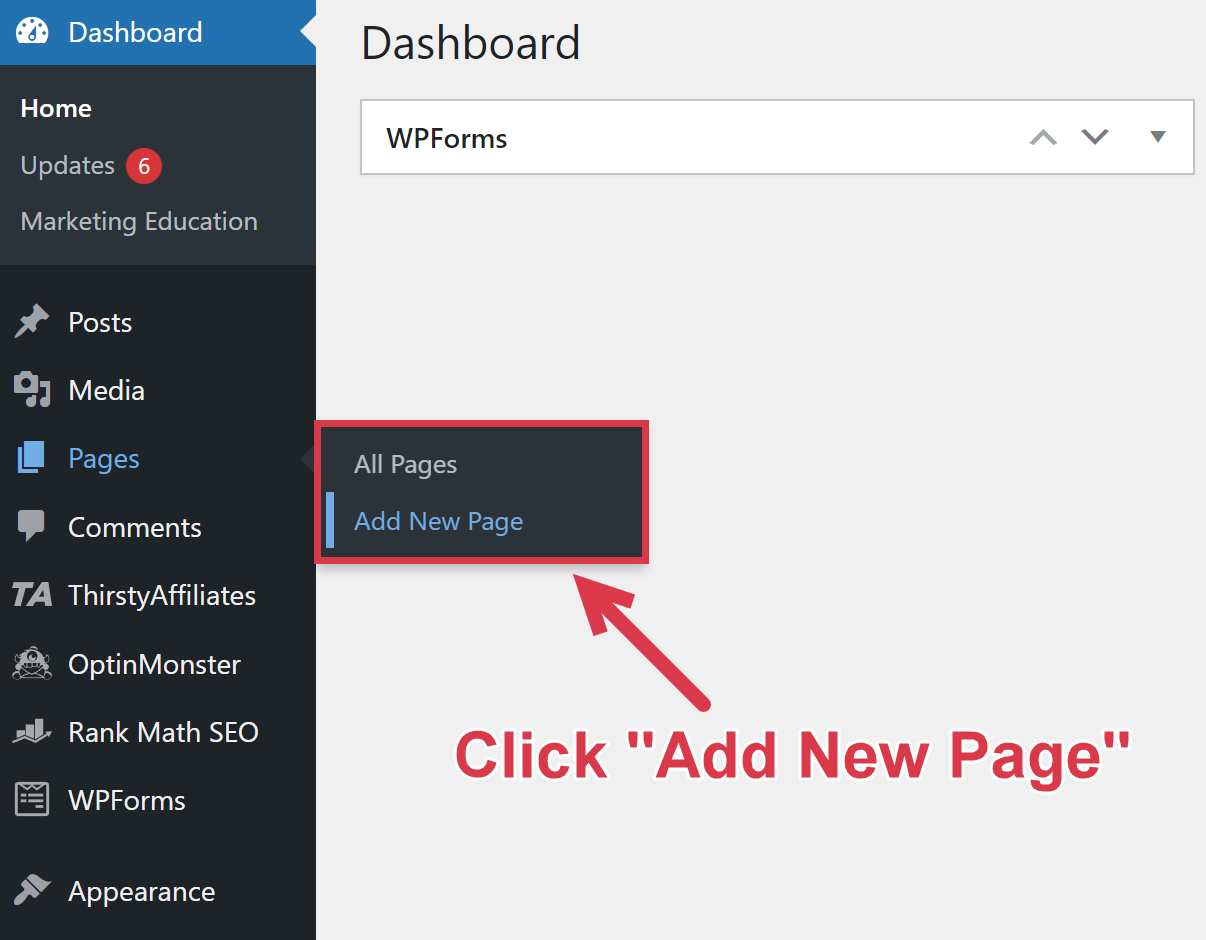
8 Start Creating Content
Now that you’ve laid the groundwork for your music blog, it’s time to start populating your site with engaging content.
Since you’ve chosen a specific niche, you’re likely overflowing with ideas for your blog posts. But it’s important you take a targeted approach to your topic selection.
You’ll want to focus on finding keywords that are frequently searched on Google but have low competition. This combination will let you rank well on search engines Google while still getting decent traffic.
Tools like the Ahrefs Keyword Explorer can help you find relevant terms and “related” phrases your audience might be looking for. Here’s an example based on a search for “guitar”:
| Keyword | Search Volume | Keyword Difficulty |
|---|---|---|
| How to tune a guitar | 11,000 | 22 |
| How many strings does a guitar have | 5,200 | 0 |
| What are guitar strings made of | 1,000 | 2 |
| What guitar does morgan wallen play | 900 | 0 |
Use these keywords to come up with 10 blog post titles. Here are a few examples:
- Easy Guitar Tuning for Beginners: A Step-by-Step Guide
- How Many Strings Does a Guitar Have?
- What Are Guitar Strings Made Of? Here’s the Answer
- This Is the Guitar Morgan Wallen Plays
With your topics chosen, here are some strategies for crafting exceptional content:
- Keep your audience in mind: Whether you’re focusing on music festivals or instrumental tutorials, understand your readers’ interests and cater your content accordingly.
- Demonstrate expertise: Build trust by showcasing your expertise, authority, and experiences. Share personal stories and clarify the basis of your advice.
- Use visuals: Enhance your posts with relevant images or videos, such as showcasing the best amps for beginner guitarists or demonstrating sound quality.
- Use emotion: Music evokes passion; let your genuine feelings shine through your writing. Keep it straightforward but heartfelt.
- Know your copyrights: Ensure you have the right to use any music or video clips. Always seek permission for copyrighted content.
- Engage your community: Encourage reader interaction by posing questions, facilitating comments, and prompting social media engagement or newsletter sign-ups.
- Use internal linking: Boost your SEO and keep visitors on your site longer by linking to related posts, like how to download music on an iPhone or the best free music apps.
Above all, success in blogging comes from providing value. Don’t just rehash existing content. Offer unique insights and information that readers can’t find elsewhere, making your blog a go-to resource in the music industry.
9 Promote Your Music Blog
Starting a music blog means more than just writing about your favorite tunes. You need to get your blog noticed.
Here are some smart ways to boost your music blog’s visibility:
- Identify where your potential readers hang out. Find Facebook groups, subreddits like r/music, niche-specific forums, Discord servers, and other relevant communities. Tailor your promotion to the platforms where your audience spends their time.
- Team up with music influencers and artists. Collaborate with well-known figures in the music industry for guest posts, interviews, or live sessions.
- Grow your email list. Motivate visitors to sign up for your newsletter so you can keep them updated with your latest posts and music reviews.
- Network both online and offline. Connect with other music bloggers, engage on social media, and appear on podcasts. Don’t forget about offline opportunities either. Participate in and organize music events and meet-ups.
- Tell your friends and family about your blog. Word of mouth is incredibly effective. Sharing your passion for music with people you know is an easy and effective way to promote your blog when you’re just starting out.
Whatever methods you choose to promote your blog, always aim to offer valuable content. Blasting links to your blog can turn people off and damage your reputation.
10 Monetize Your Music Blog
It’s time to start making money from your music blog and enjoy the fruits of your hard work. Here are four effective ways to monetize your blog while keeping your readers happy:
Use Affiliate Marketing
Promote trusted musical instruments, gear, and streaming services you personally use and recommend. You’ll earn a commission for each purchase made through your affiliate links to these products.
Why It’s Great: You get paid while your readers discover great music-related products.
Get Started: Dive into our detailed guide on how to start affiliate marketing. Also, check our selection of top music affiliate programs.
Run Display Ads
Register with an advertising network and look for sponsorships to display ads on your music blog.
Why It’s Great: Each interaction with an ad generates revenue for you. Just ensure the ads don’t undermine your credibility or the user experience.
Get Started: Start with a beginner-friendly ad network like Ezoic. As you get more traffic, you can switch to higher-paying networks like Mediavine (minimum 50,000 monthly sessions) or Raptive (minimum 100,000 monthly sessions).
Sell Your Own Products
Earn money by selling digital products such as music tutorials, online courses, and sheet music.
Why It’s Great: Convert your knowledge into helpful products that assist your readers and boost your income significantly.
Get Started: Identify what your audience wants— maybe a guitar tutorial, a vocal training course, or sheet music. Platforms like Teachable are ideal for selling courses or use a tool like WooCommerce to sell directly from your blog.
Sell Music Lessons
Transform your music blog into a lucrative income stream, or even a full-time job, by offering music lessons. You can sell pre-made video lessons covering various subjects, from guitar-playing techniques to amp customization.
Why It’s Great: It’s a fantastic way to earn money while doing what you love, and it also provides a chance to gather valuable user-generated content like reviews and testimonials from your students.
Get Started: Use a booking plugin on WordPress to allow customers to schedule one-on-one coaching sessions with you. This direct interaction boosts your income and enhances your blog’s value with real student feedback.
👉 See also: Types of Blogs That Make Money
Summing Up
We’ve just touched on the basics of launching a music blog, but there’s a lot more to it.
Creating a thriving music blog is a broad topic that can’t be fully explained in just one article.
That’s why we’ve put together a free training for newcomers. In this training, you’ll discover seven proven strategies to make your new blog 83% more effective.
This is your next move if you’re serious about making your mark.
Sign up for the free training today.
FAQ
Do Music Blogs Make Money?
Music blogs can make money. On average, music bloggers make around $4,400 monthly through affiliate marketing, selling merchandise, running display ads, offering music lessons, and other monetization strategies. Your earnings will depend on your niche, content quality, keyword selection, and other factors.
How Do I Start My Own Music Blog?
You can start your own music blog by choosing a specific music niche to attract a dedicated audience. Then, select a blogging platform like WordPress, pick a unique domain name, and secure web hosting. Create compelling content and use SEO to drive traffic.










